Masti Dubai 2.0 by Studio Lotus adopts an old-into-new design approach, sensitively preserving the vibrancy of the original while seamlessly incorporating new, dynamic elements. First unveiled in 2016 in La Mer, Dubai, the original Masti Cocktails & Cuisine had emerged as a world-class dining destination for patrons looking to indulge in Indian-inspired cuisine with a contemporary twist. The award-winning design drew from cultural influences—bold, vibrant, and buzzing with energy—much like the nation that inspired the restaurant’s concept.
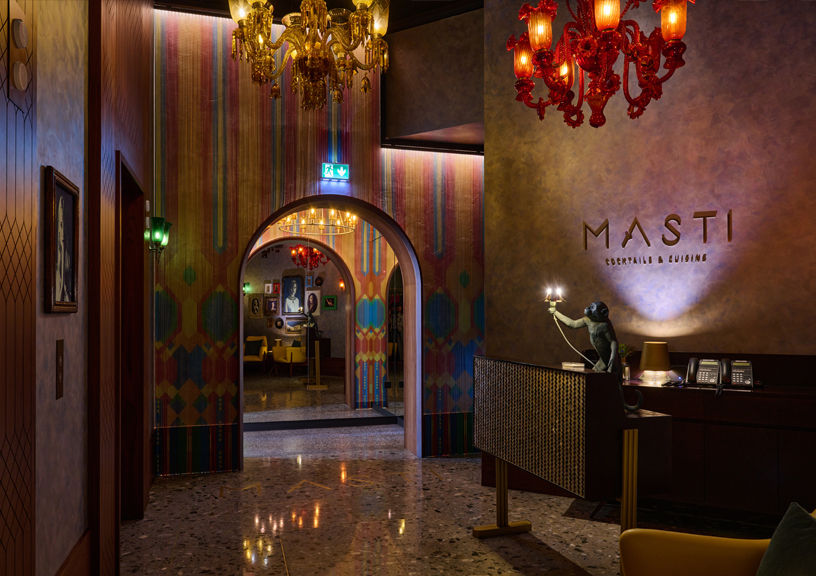
The move from La Mer to The Dubai Edition Hotel is characterised by a meticulous approach to reuse and repurposing. The design is a skillfull assemblage of the old and the new that preserves the hospitality experience of the original while enhancing the drama and delight of dining one can expect from the Masti crew.
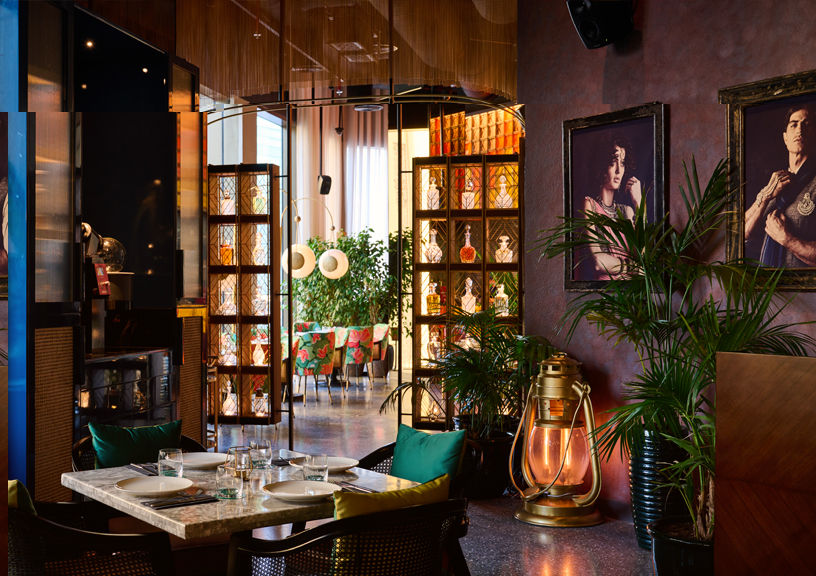
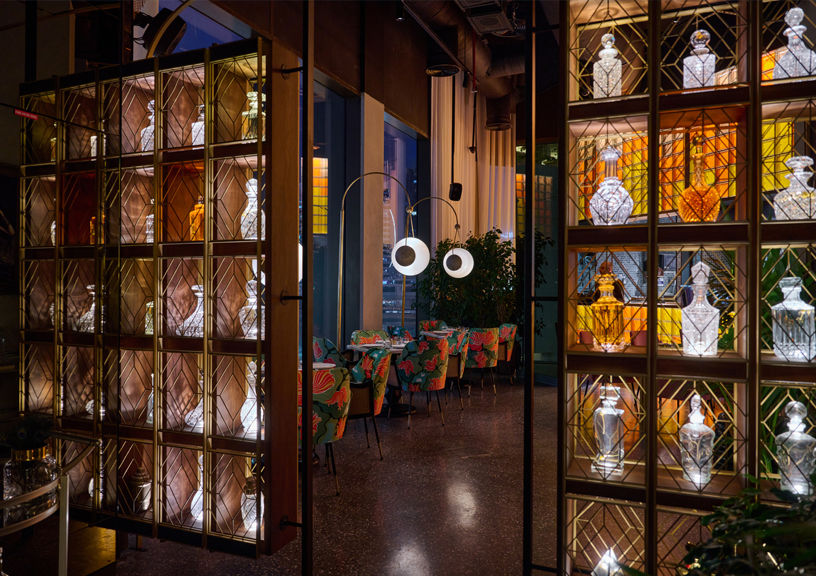
Familiar spatial markers carrying forward the memory of the original, such as the custom-designed furniture by Mangrove Collective and lighting by AKFD, have been reused—evoking a sense of warmth and nostalgia. On the other hand, dynamic new insertions celebrate the restaurant in its new avatar. One of the key design concerns was establishing a seamless cohesion of functions within a small footprint on the hotel’s first floor, which turned into an opportunity to experiment with new dynamic elements and layouts.


Three distinct areas define the dining experiences. The first zone features an experiential dining area where patrons can engage with the activities within the kitchen through an open counter. This space leads into a secondary dining area, anchored by the bar, which is characterised by the familiar stained-glass elephant sculpture, transported here from its former location.
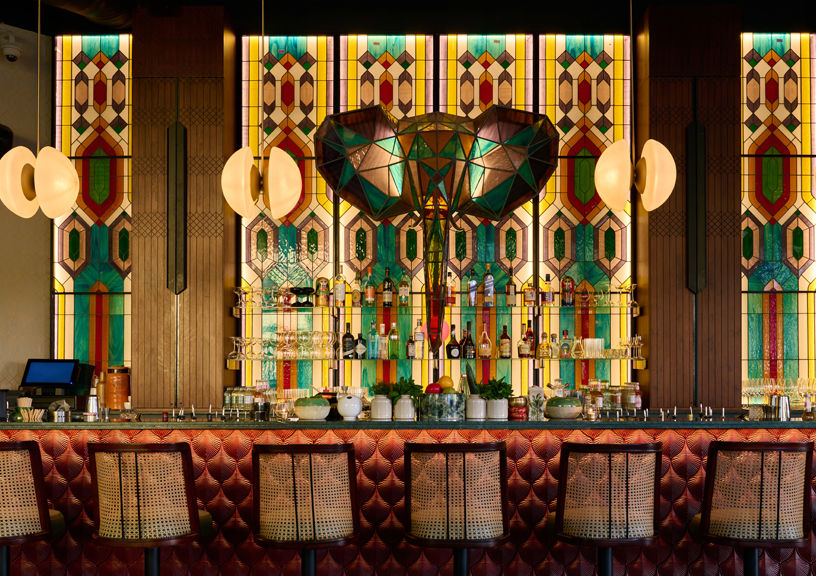
Finally, alfresco seating in intimate pockets on the balcony offers expansive views of the cityscape. Placement of the large kitchen footprint at the entrance left a narrow passageway with a large span of a dead wall as its remnant. To create an intriguing guest experience, the design approach heightened the contradictory nature of both spaces. Guests were taken onto a journey—entering through the narrow tunnel, the experience amplifying the expansiveness of the restaurant space beyond. Moreover, the illusionary effects of mirrored reflections were leveraged to visually expand the narrow corridor.

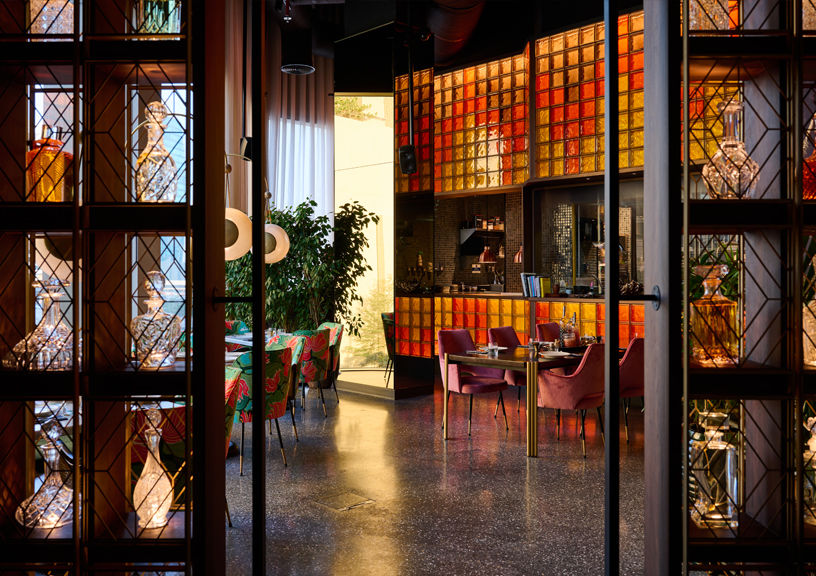
Integrating Kriska chainmail in vibrant colours, the architecturally rigid archway was overlaid with delicate aluminium material. With a subtle sway, the chain-link structure brings a dynamic touch, offering a surreal entry experience. An integral part of the new dining experience, the walls of the open kitchen are clad in amber-yellow glass bricks, emulating the incandescent embers of an Indian tandoor. A second archway—the repurposed gin screen—becomes a portal to the bar with the stained-glass elephant.
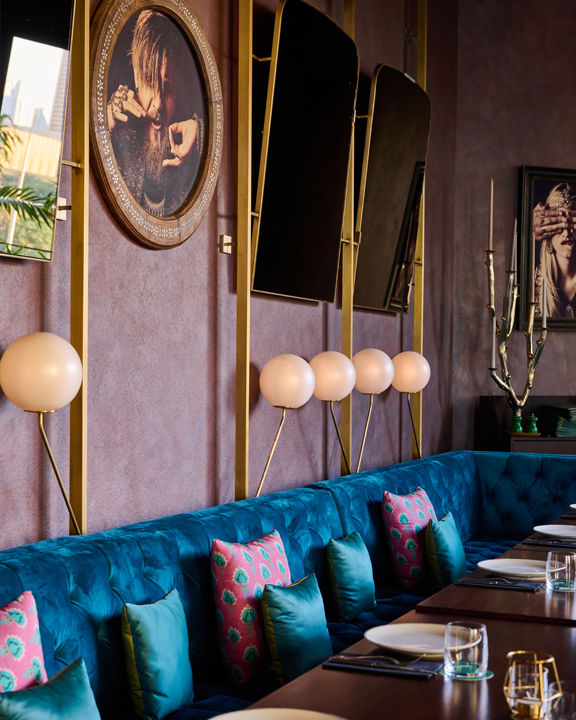
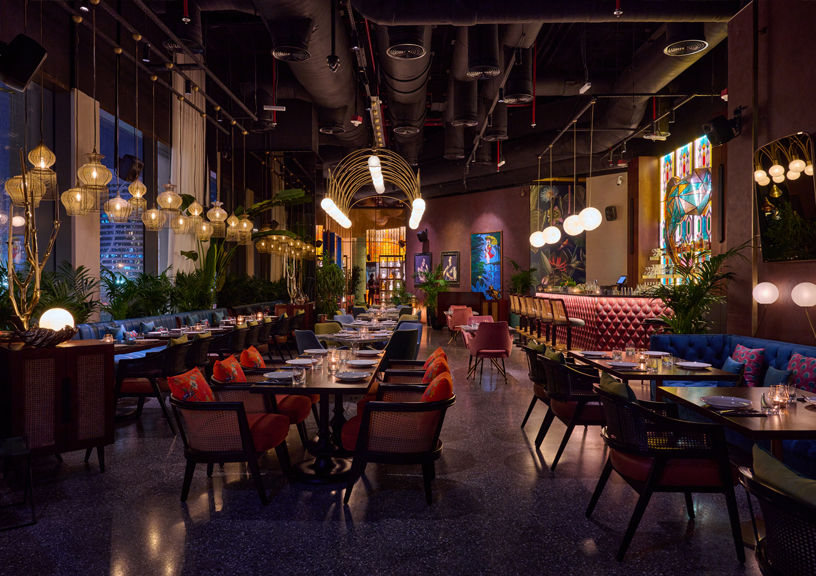
Handcrafted in stained glass, green quartzite, and wood, it sets the precedent for the rest of the space with exaggerated spinoffs of flora and fauna, strongly associated withthe country, in different mediums—imaginatively aligning the fun quotient of the brand. Glazing along the northern periphery offers panoramic vistas of the skyline. Sheer white curtains let in dappled light throughout the day. Adding to the sense of drama is the rotovap, a machine that infuses different flavours into gin, encased within a cabinet of curiosities.
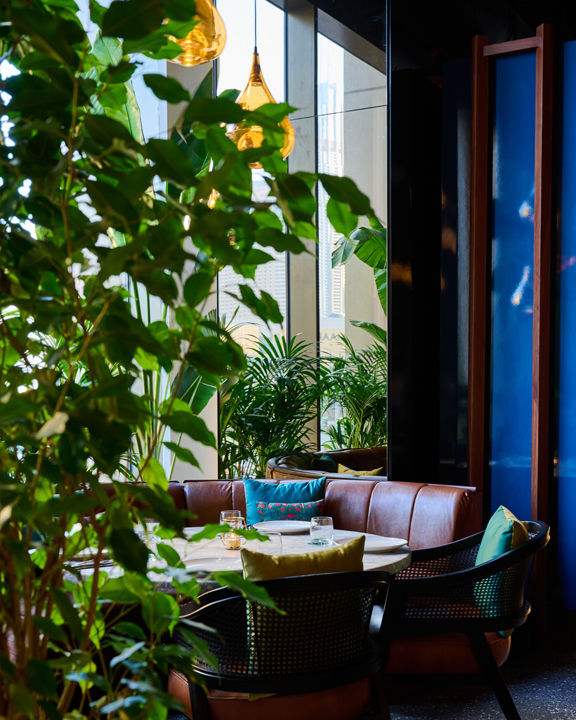

Every now and then, a little visual spectacle is created when the cabinet is opened up for use. All the new elements that have been introduced, celebrate the details and playfulness of the first restaurant, immersing the patron into a space that feels familiar yet exciting. Lush wallpapers and texture-painted walls form the backdrop for the tactile details captured in the millwork and restored custom-made furniture, evoking memories of the former restaurant, and adding to the ambience in the new location. In contrast to conforming to design trends, the space possesses a unique charm, retaining identity through the repurposing of various elements, yet uncompromising on the creation of a deeply luxurious dining experience.
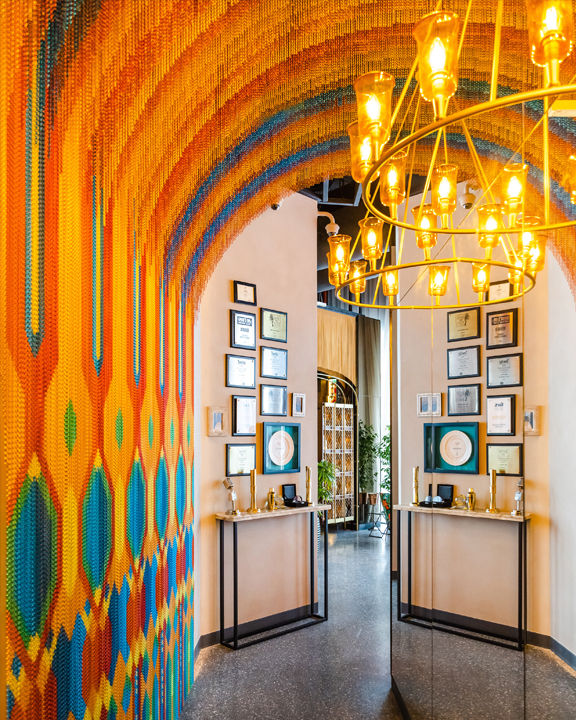
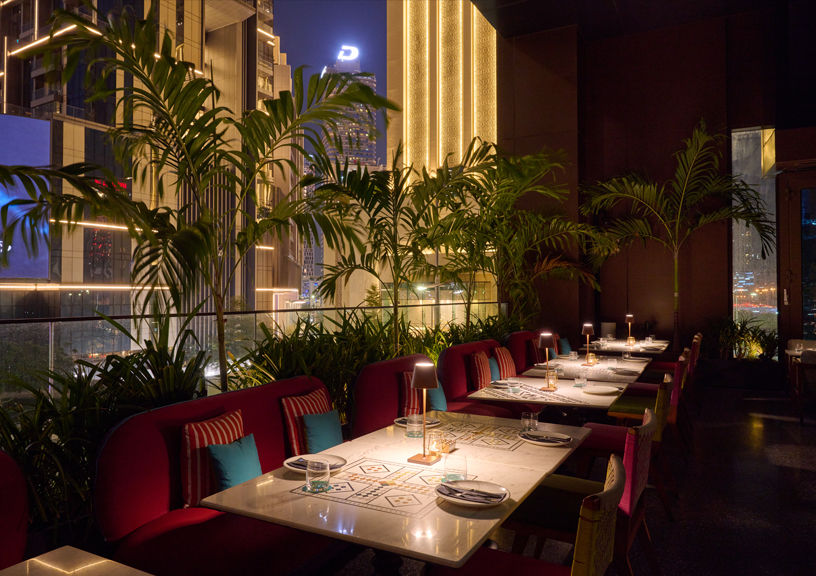
Very few new items were introduced during construction. Instead, meticulously selected and reused elements such as the existing flooring, bar backdrop, and furniture, were polished, mended, and reupholstered. Sheer curtains and lighting from the previous site were repurposed, creating a fresh relationship with the furniture. The result challenges the notion that luxury spaces require entirely new and custom-made elements, showcasing Studio Lotus’ commitment to minimal new interventions and maximal repurposing.
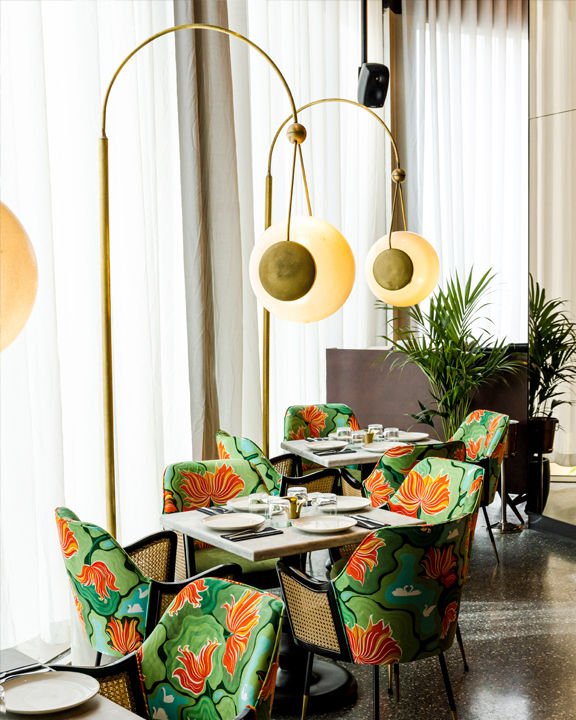
FACT FILE
Typology: F&B (Restaurant Interiors)
Name of Project: Masti
Location: The Dubai Edition Hotel–Dubai Fountain St-Downtown Dubai, United Arab Emirates
Design Firm: Studio Lotus
Design Team: Asha Sairam, Neelam Das, Rushali Malhotra
Site Area:4800sqft Built-Up Area:4800sqft
Photographer: Juliet Dunne
